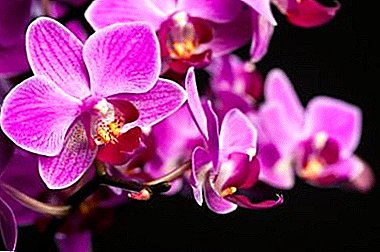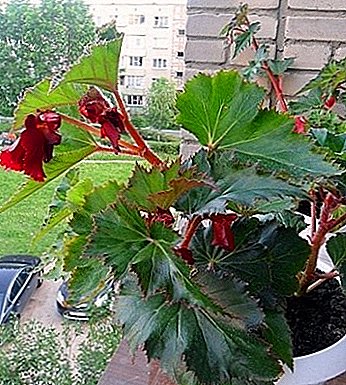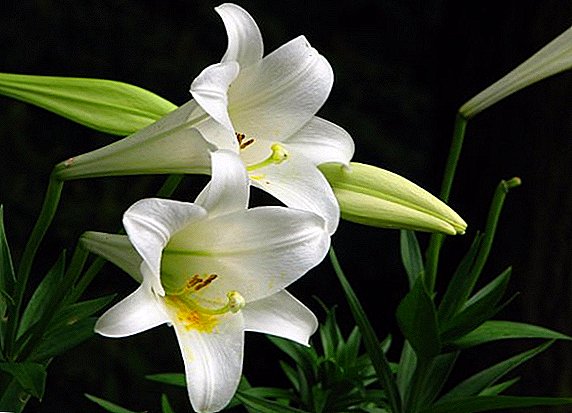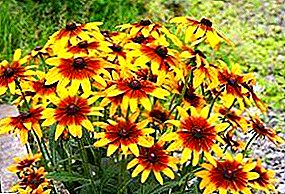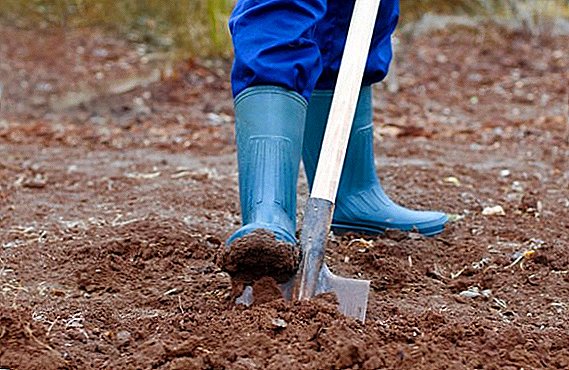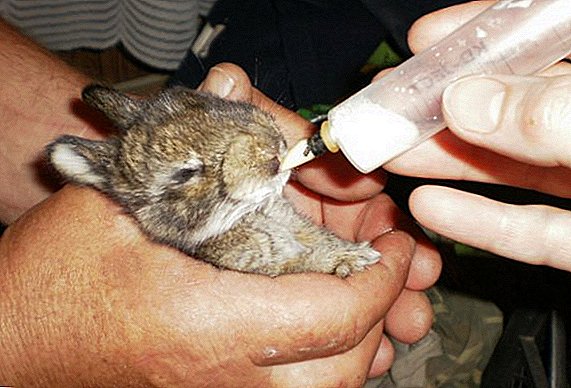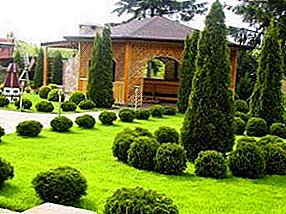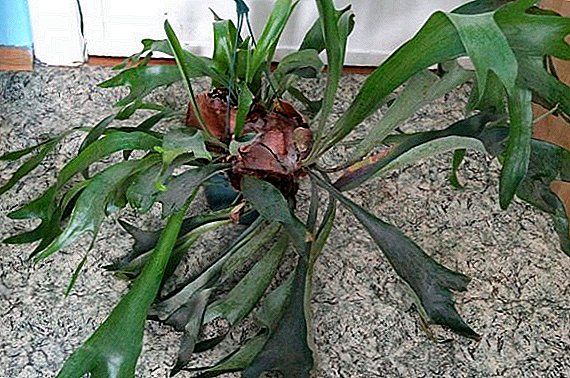 Platicerium - genus of ferns belonging to the family of the Centipede. Very common in the rainforests of the Old World.
Platicerium - genus of ferns belonging to the family of the Centipede. Very common in the rainforests of the Old World.
Did you know? The Latin name for the plant platyceros is derived from the Greek words platos - wide and keros - horn; literally means "fallow deer", which indicates the shape of a fern that resembles deer horns.
Platicerium: description of indoor fern
 Deer antlers are a large epiphytic plant with a branched rhizome, its aerial roots are in the zone of the upper leaves and under rhizomatous scales. The leaves of platicerium are sterile and sporiferous, and they also differ morphologically. Sterile leaves are wide, rounded and sessile, fit snugly to the trunk and branches of the host tree with a free upper edge that forms a niche, precipitation and humus from fern leaves that die off enter it.
Deer antlers are a large epiphytic plant with a branched rhizome, its aerial roots are in the zone of the upper leaves and under rhizomatous scales. The leaves of platicerium are sterile and sporiferous, and they also differ morphologically. Sterile leaves are wide, rounded and sessile, fit snugly to the trunk and branches of the host tree with a free upper edge that forms a niche, precipitation and humus from fern leaves that die off enter it.
Humus over time accumulates and can serve as a substrate for the roots of a plant, with age, the mass can reach about 100 kg. Sporonosnye leaves of flat shape, on short petioles, with a dense skin, erect or hang down, creating the impression that the flower looks like deer antlers. Sporangia are responsible for photosynthesis and reproduction; they are not collected in sori, but simply scattered on the apical part of the leaves, giving the lower part a red tint.
Platicerium types
The fern platicerium grows in the tropical forests of Central Africa, there are about 20 plant species, but 4 species are grown in indoor conditions.
Platicerium Angolan. It is characterized by triangular, whole, spore-bearing leaves up to 40 cm wide, extended to the upper edge, which is pubescent in orange and has notches on it. Sterile leaves are slightly bent around the edges and solid.
Did you know? Platicerium Angolan destroys gaseous carbohydrates and cleans the air in the apartment.
Platicerium large - a large plant whose homeland is Australia and tropical Asia. Its sterile leaves are wide enough, up to 60 cm and dissected at the ends. Sporiferous - wedge-shaped, half of the leaf is dissected into belt-like strips. The length can reach up to 2 m.
 Platicerium double, or platicerium is deer-horny, growing in nature in Australia. The most popular among the indoor species of platicerium. Its lower sterile leaves are roundish, convex and dissected, and the upper spore-bearing no longer than 70 cm, gray-green in color, wedge-shaped at the base, but expanding to the upper part.
Platicerium double, or platicerium is deer-horny, growing in nature in Australia. The most popular among the indoor species of platicerium. Its lower sterile leaves are roundish, convex and dissected, and the upper spore-bearing no longer than 70 cm, gray-green in color, wedge-shaped at the base, but expanding to the upper part.
Platicerium Hill - looks like the previous look, but more elegant and fragile. Its leaves are not deeply dissected, straight, individual segments pointed at the ends. Very similar to the previous view, but more miniaturized. The birthplace of the Platicerium Hill is the Australian tropics.
Features of growing domestic fern
It is necessary to choose for the fern a western window, the optimum temperature and humidity.
The choice of location: what should be the lighting, temperature and humidity
 Home flower deer antlers grow best in bright, but shaded from direct sunlight. The sun is very dangerous for the leaves, can cause burns and seriously harm platicerium. If the light is not enough, you need to additionally illuminate the lamp. The apartment should maintain the temperature in the summer of + 20-25 ° C, and in the winter - + 20-22 ° C, the temperature below +15 ° C is harmful to platicerium, which can provoke its death.
Home flower deer antlers grow best in bright, but shaded from direct sunlight. The sun is very dangerous for the leaves, can cause burns and seriously harm platicerium. If the light is not enough, you need to additionally illuminate the lamp. The apartment should maintain the temperature in the summer of + 20-25 ° C, and in the winter - + 20-22 ° C, the temperature below +15 ° C is harmful to platicerium, which can provoke its death.
Flat dryness is very bad for platicerium. Flower platicerium, to ensure proper care, it is better to put on a tray with expanded clay or hang over the aquarium. The plant needs a very high humidity, it should be sprayed with warm boiled or purified water. Spraying with running water is prohibited due to the fact that on the surface of the smallest leaf scales can clog, which can harm platitserium.
Important! It is also impossible to wipe dust from the leaves with a sponge or cloth, so as not to mechanically damage the velvety hairs that trap moisture, this requires a more abundant spraying.
What soil is planted platicerium
Platicerium grows well in substrates, which include peat, leaf and coniferous earth, crushed sphagnum in proportions of 2: 2: 2: 1. You can try the composition of peat, chopped sphagnum and chopped fern rhizomes, mixed in a ratio of 1: 1: 1, and bromeliad mixtures, based on shredded bark, sphagnum and rhizomes of a fern in a ratio of 2: 2: 1. The flower of the platicerium includes in its care for itself such requirements as the moisture content of the land mixture and its breathable properties.
Planting and reproduction of platicerium (deer antlers) at home
 Platicerium is capricious, and caring for it at home takes a lot of energy. Often platicerium is grown in hanging baskets or on pieces of wood bark. When choosing the second option, the plant is fixed on the bark with wire, and a little earth is poured under the lower leaves. Platicerium increases in growth, and the gap between the bark and leaves, too, so the soil should be added, but do not need to clean the dried lower leaves, they favor the fern. In the case when the platicerium is planted in a pot, it is necessary to fill 1/3 of expanded clay in order to maintain the moisture of the earth and protect the roots from rotting if they are filled with excessive water.
Platicerium is capricious, and caring for it at home takes a lot of energy. Often platicerium is grown in hanging baskets or on pieces of wood bark. When choosing the second option, the plant is fixed on the bark with wire, and a little earth is poured under the lower leaves. Platicerium increases in growth, and the gap between the bark and leaves, too, so the soil should be added, but do not need to clean the dried lower leaves, they favor the fern. In the case when the platicerium is planted in a pot, it is necessary to fill 1/3 of expanded clay in order to maintain the moisture of the earth and protect the roots from rotting if they are filled with excessive water.
Like most ferns, the flower of deer antlers reproduces by spores, which germinate only in a bright place, and the seed normally develops exclusively in a wet environment, and therefore the crops of spores are necessarily kept under a transparent cap. It also propagates by shoots (they are separated from an adult plant and planted in separate pots filled with pebbles and moss) and by division (the young plant is separated and planted in different containers)
Top tips for caring for platicerium
Proper care is the key to good fern development.
Watering
 Deer antler flower needs regular watering, and you should know how to properly care for it. Water for irrigation should be at room temperature and filtered. The watering itself is plentiful, but it is worth waiting until the top layer of the soil dries. A basket with a platicerium is immersed in a container with water, after the flower is soaked with moisture, taken out of the water and left without watering for several days. If the fern is grown in a conventional flowerpot, make sure that no moisture accumulates in the pan to keep the roots from rotting from the bay.
Deer antler flower needs regular watering, and you should know how to properly care for it. Water for irrigation should be at room temperature and filtered. The watering itself is plentiful, but it is worth waiting until the top layer of the soil dries. A basket with a platicerium is immersed in a container with water, after the flower is soaked with moisture, taken out of the water and left without watering for several days. If the fern is grown in a conventional flowerpot, make sure that no moisture accumulates in the pan to keep the roots from rotting from the bay.
Top dressing
Deer antlers as a flower wayward in compulsory care includes constant feeding. Produce fertilizer once a month when watering special fertilizer for ferns, using ½ of the concentration specified in the instructions. Some gardeners advise under the dome, which form the sterile leaves, put scalded tea leaves or pieces of banana peel.
Platicerium Transplant
 Transplant platinum only when necessary. During this operation, there is a risk of damage to the sterile leaves, and even if it is possible to separate them carefully, after the transplant process, they will not be able to lie down with a graceful membrane dome, closely adhering to the surface. Substrate replacement can be carried out by reaching the roots, using slots in the lower part, which are made on the eve of planting.
Transplant platinum only when necessary. During this operation, there is a risk of damage to the sterile leaves, and even if it is possible to separate them carefully, after the transplant process, they will not be able to lie down with a graceful membrane dome, closely adhering to the surface. Substrate replacement can be carried out by reaching the roots, using slots in the lower part, which are made on the eve of planting.
Major diseases and pests of room platicerium
A fern-like room flower can suffer from abusive conditions. Excessive lethargy and a change in the color of the leaves to lighter indicates that the plant is under the influence of sunlight; the appearance of dark spots, including talks about the likelihood of a burn. You need to remove the plant from the window or create a large shadow. Drying of the leaves will tell about the lack of moisture, which will help with frequent spraying of the plant, and their wilting will result in an overabundance of moisture. Remove the rotted roots and sprinkle the cuts on the spores with a small amount of charcoal, do not water for several days.
 Indoor flower fern is susceptible to damage by the shield, and care for it is complicated by the fact that it should be removed manually. It is better to get rid of thrips and spider mites by applying the spraying of "Fitoverm" with a fine disperser, which will allow the drops not to gather on the leaves and not to get on the soil. Before processing, it is necessary to cover the ground with plastic film.
Indoor flower fern is susceptible to damage by the shield, and care for it is complicated by the fact that it should be removed manually. It is better to get rid of thrips and spider mites by applying the spraying of "Fitoverm" with a fine disperser, which will allow the drops not to gather on the leaves and not to get on the soil. Before processing, it is necessary to cover the ground with plastic film.
Important! The use of chemical means of control can cause burns of leaves and even their deformation, so this method should be resorted to only in case of emergency.
To the question of beginning flower growers, whether it is possible to keep deer antlers at home, there is an unequivocal affirmative answer - it is possible and necessary to add decoration and refinement to your room.



